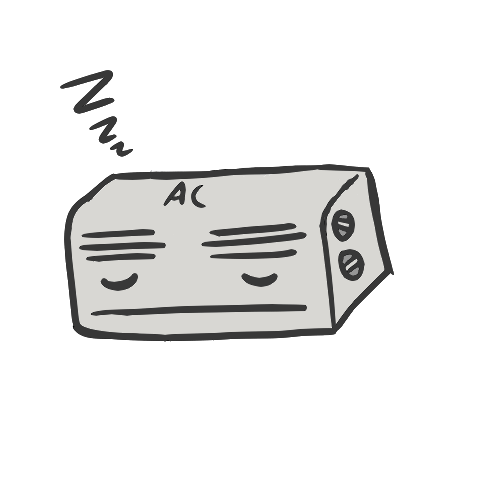The London Green Directory!
Air Quality | Waste | Food | Water | Energy | Transportation | Ecowise Consuming | Empowerment| Biodiversity
Air Quality
Impacts of Air Pollutants and Smog

The quality of our air directly impacts our health and the natural environment. Ontario’s Ministry of the Environment, Conservation and Parks works to protect air quality through legislation, targeted programs, and partnerships with other jurisdictions. The city’s air quality overview can be found here.
Up until 2008, the smoggiest region in Canada was, according to Environment Canada, rural southwestern Ontario, along the north shore of Lake Erie. Here, ground-level ozone regularly exceeded the guidelines of more than 30 days per year. Reasons for this pollution included the high population density, consequent large emissions of precursor pollutants and suitable climate.
Industrial emissions have had a major impact on pollutants, specifically coal-fired generation stations. In 2001, the Province committed to shutting down all five of Ontario’s coal-fired generation stations. The Lakeview plant was shut down in 2005 followed by a plan to close the other four of the generation stations, which concluded in 2014. Some generation stations (such as the Thunder Bay and Atikokan locations) have been converted to use biomass as their fuel. Nowadays, most pollutants come from vehicles and transboundary air pollution.

In Canada, transportation is one of the main sources of air pollution even though cars are becoming more efficient in design, for example, newer vehicles have lower tailpipe emissions and other newer vehicles are hybrid or electric. In 2015, Environment Canada put in place new emission and fuel standards for vehicles. This also included reducing the amount of sulphur the vehicles were allowed to release annually, a decrease from 30 ppm to 10 ppm in 2017. Updated fuel standards in 2014 were intended to increase fuel efficiency in cars by 50% in comparison to car models from 2008. Ontario’s Cleaner Transportation Fuels regulation ensured that suppliers had to blend 10% renewable content into their fuel from 2020 to 2024. This regulation then mandates that they increase this amount to 15% by 2030.

Air pollutants and smog are monitored and reported using the Air Quality Health Index (AQHI) with zero corresponding to no measurable concentration levels, to 1-3 being low risk, 4-6 being a moderate risk, 7-10 being a high risk and over 10 being a very high risk. AQHI is based on the following pollutants in our air: sulphur dioxide, ozone, nitrogen dioxide, total reduced sulphur compounds, carbon monoxide and fine particulate matter. The Ontario Ministry of the Environment oversees all air quality regulation in Ontario and is located at College Park 5th Flr, 777 Bay St, Toronto, ON M7A 2J3. Call 1-866-585-5008 for more information about air quality. You can also visit their website or email them about any questions you may have.
The Ministry has a network of 38 ambient (outside) air monitoring stations across the province. These collect real-time air pollution data. This information reaches the public through Ontario’s Air Quality Health Index (AQHI; formerly known as the Air Quality Index until 2015). The AQHI and data collected from our monitoring stations are posted each hour, 24 hours a day, seven days a week. They also appear on Environment Canada’s website. Yearly air quality reports can be found here, at the bottom of the page.

There are two levels of Smog Alerts: smog watches are issued when there is a 50% chance elevated smog levels will occur within the next three days and smog advisories within the next 24 hours, or immediately if widespread poor AQHI readings occur and if weather conditions are conducive to levels expected to continue for several hours. Air Quality Alerts are updated throughout the day and can be found at https://www.airqualityontario.com/aqhi/alerts.php. London had a number of smog alerts in the past which has improved considerably. Middlesex-London Health Unit reports that between 2004-2010 there has been less poor air quality days.Comparing data from the early 2000’s to now there is more consistency in both monitoring and efficiency in decreasing the amount of smog days in London than there were prior to 2010. Smog Alert instances have decreased over the last two decades, with no smog alerts issued between 2013 and 2019.
The ministry handles a broad range of air quality issues such as smog alerts derived from Ontario’s Air Quality Health Index (AQHI) data monitoring stations to issue the alerts. There are municipal response plans, climate change and emissions reduction strategies, transboundary air pollution, sulfur reductions, and US coal-fired power plant emissions. There is a national action plan which exists to control and reduce ozone depleting substances such as CFCs and HCFCs.
The Middlesex-London Health Unit (MLHU) publicizes poor advisory days and has various information bulletins on air quality issues. Call the Environmental Health Division at 519-663-5317 for more information or visit https://www.healthunit.com/environment.


The City of London also enforces London’s Anti-idling By-law. The bylaw prohibits idling of vehicles over 2 minutes, except for certain circumstances such as cold weather (less than 5°C) or hot weather (greater than 27°C) and when advised to do so by a doctor. This limit was revised in 2008 from the previous limit of 5 minutes. According to Natural Resources Canada’s Office of Energy Efficiency, if every Canadian motorist avoided idling their vehicle for just 5 minutes each day of the year, we could prevent more than 1 million tonnes of carbon dioxide from entering the atmosphere.
(Source)
Reporting

The city has identified that most smog in London is from a culmination of small sources: vehicles, lawn mowers, and solvent use from homes and small industries. According to the Ontario Energy Board, Ontario generates over 85% of its electricity through environmentally-friendly sources such as nuclear and hydro. Nuclear energy continues to engage public debate as the processes for mining and refining uranium ore and making reactor fuel all require large amounts of energy. Unfortunately 12.5% of our electricity is still generated by natural gas, which can contribute to air emissions. Additional air pollution reaches us upwind from the United States coal-fired electricity plants. However, thousands of other smaller airborne contaminants exist including dry cleaning chemicals, fumes from gas stations, auto body and print shops, chemical sprays, gasoline or diesel-powered machinery i.e. leaf blowers, home, school, office furnace particles and products sold such as oil-based paint. In fact, some some Canadian cities have started to ban leaf blowers during the summer time because of their harmful emissions. For more information on environmental assessments in London please go to https://london.ca/living-london/water-environment/environmental-assessments.
Municipal

The City of London’s community energy action plan began with 1990 based data as required by the province. The City of London has been working on a plan to get London’s emissions to net-zero by 2050, and the emissions in London in 2020 had already decreased by 30% since 2005. More information about London’s climate emergency action plan can be found here.
London has been a member of the Partners for Climate Protection being led by ICLEI Local Governments for Sustainability Canada.Since joining in 1994, London has completed the FCM’s five milestones. Over 2000 members across Canada are working with the Federation of Canadian Municipalities (FCM) ‘Partners for Climate Protection’ campaign to reduce community energy use and greenhouse gas emissions (GGE).
London is also part of the more recent International Compact of Mayors Agreement (2014) which merged in 2016 with the EU Covenant of Mayors to create the Global Covenant of Mayors for Climate and Energy, the largest global coalition of cities committed to climate initiatives. London is a part of FCM because they are a Canadian group, but they are not a part of ICLEI as it is an international organization. The groups work together with the Global Covenant of Mayors for Climate Energy to further advance local climate action. The coalition is made up of 2000 cities and local governments working together to achieve the goals set in the 2016 Paris Climate Agreement.
Health

Air pollutants and smog are, by definition, injurious to life and property. The primary impact in London from air pollution is on human health. Air pollution has shown to be a cause of disease, increased hospitalizations, and premature death. Smog can cause damage to your heart and lungs, and it can irritate your eyes, nose, and throat. Persons most at risk are those with respiratory problems, children and seniors, and those suffering from heart disease, lung disease or diabetes, but even healthy individuals who work or exercise outdoors in urban areas may be subject to health risks. Seniors generally feel more the negative health effects of smog, while children are more sensitive to it since their respiratory systems are still developing and they are often engaging in physical activity. Even healthy young adults have a harder time breathing in heavily polluted air.
Air pollution at all levels can impact human health. Even with relatively low levels of air pollution in Canada, research has shown it leads to disease, increased hospitalizations, and even premature death. In 2017, the International Institute for Sustainable Development reported that air pollution is responsible for 7,000 to 14,000 premature deaths every year. Their full report from 2017 can be read here. Air pollution is composed of a variety of substances with most health effects attributed to smog. A number of health risks are associated with air pollution. Breathing and lung conditions affected include asthma, allergies, and chronic obstructive pulmonary disease (COPD) and heart conditions affected include angina, arrhythmia, heart attack, hypertension, and health failure. Children, older adults, pregnant women, and those with existing heart and lung conditions are most vulnerable to the fine particulate components of smog. For more information, please refer to the Government of Canada website that details what the health risks are.
The Ontario Public Health Standards states that one of the mandatory programs/services that must be delivered to patients includes environmental health. In the report Assessing Health Vulnerability to Climate Change, data showed that health risks are increasing for people across North America as well as those in Middlesex Country and London because of climate change, and it stated that one of the risk factors is air quality.

While it is difficult to protect yourself from all forms of air pollution, the Residential Indoor Air Quality Guidelines are a great resource to protect yourself from contaminants in your own home. Road traffic air pollution is a concern in densely populated urban cities, but the majority pollutants come from greenhouse gas emissions from energy production and manufacturing industries. It is important to check the Air Quality Health Index for your region and limit time spent outdoors on days with higher risk.
Environmental Impact

Smog has also been found to damage forests, agricultural crops and natural vegetation. Smog-causing pollutants even contributes to corrosion of materials like rubber and stone. To see more information regarding environment and wildlife enforcement and how you can help refer to the page here from Environment and Climate Change Canada.
The importance of trees and vegetation is often overlooked. Even in your home, houseplants can support clean air. Trees trap dust, airborne particulate matter and ozone thereby improving air quality and human health and reducing smog. Since concrete and the lack of a natural ecosystem prevent trees from reseeding themselves in most parts of an overall urban forest, it becomes our job to continually plant new trees. Not only do they moderate air temperature, but through photosynthesis, their leaves take in carbon dioxide and release oxygen for us to breathe. Locally, ReForest London’s “Million Tree Challenge” has become a great success to provide support to the local community with tree planting. Planting trees is a proactive measure as we face the growing threat of climate change.
Examples of City projects include:
- City Hall is heated and cooled by London District Energy’s tri-generation system, the most efficient way to use natural gas (generates electricity as well as steam for heating buildings and chilling water)
- Since the 1990s, the City has used innovative energy performance contracts to make their buildings more energy efficient
- Bee and pollinator gardens such as the Central London Pathway
- Protection of Environmentally significant areas from invasive species
- The City is reconstructing Mud Creek with new improvements that will reduce flooding in the area. The project will also restore features of the existing wetland and habitat
- In 2022 more than 15km of new bike lanes and 6.5km of new sidewalk were constructed
- The City is in the process of switching several diesel powered garbage collection trucks to over 30 new trucks powered by compressed natural gas
- New LED light fixtures are being installed at various City arenas and community centers that will save up to 700 MWhs per year
- London has developed a Climate Emergency Action Plan in April 2022 as a roadmap to achieve net-zero greenhouse gas emissions by 2050

Federal
The federal government makes public federal legislation, guidelines, regulations and incentives specific to man-made polluting emissions and air quality. Information includes documents such as: Canada’s Energy Efficiency Act, the National Energy Board Act and Canada’s Regulatory Framework for Air Emissions. The federal site outlining and information and protection measures can be found here. Canada is part of the Paris Agreement (within the UNFCCC, it’s sets goals to combat climate change), which has established the objective to reduce emissions by 40 to 45 per cent by 2030 on the path to net zero emissions by 2050. The Emissions Reduction Plan is a requirement under the Canadian Net-Zero Emissions Accountability Act, which establishes regular milestones for tracking Canada’s progress. The Climate Action Tracker has more information on Canada’s progress towards the Paris Agreement.

The federal Canada Clean Air and Climate Change Act amended the Canadian Environmental Protection Act, 1999, the Energy Efficiency Act and the Motor Vehicle Fuel Consumption Standards Act (Canada’s Clean Air Act). This bill addresses and lays out national standards on air pollution as well as greenhouse gas emissions. Air pollutants from appliances (air conditioners, furnaces, heat pumps), which are associated with smog had been placed on a schedule of the Canadian Environmental Protection Act, 1999 (CEPA 1999) so control actions and preventative maintenance can be put in place to phase out and reduce these products.
The Canadian Environmental Protection Act (CEPA) and Ontario Regulation 419/05, provides a list of pollutants of concern subject to legislative control and management and these are reported to the National Pollutant Release Inventory. This inventory identifies pollutants released, disposed of and recycled by Canadian facilities.
The federal Natural Resources Canada’s ‘Idle Free Zone’ provides fact sheets, resources and educational materials to promote personal vehicle idling reduction messages and campaigns.
Provincial

The Ontario Ministry of the Environment uses stringent regulations, targeted enforcement and a variety of innovative programs and initiatives to address environmental issues that have local, regional and/or global effects. Responsibilities include protecting air, land and water to ensure healthy communities, ecological protection and sustainable development for present and future generations.
While the government of Ontario retains the primary responsibility for environmental protection, the Environmental Bill of Rights (EBR) provides every resident with formal rights to participate in decisions being made on environmental issues. An Environmental Registry provides public access to notices on new or revised laws, regulations, policies and programs through government ministries covered by the EBR. The office of the Auditor General of Ontario is an independent, non partisan Office of the Legislative Assembly now responsible for monitoring government obligations under the EBR including the registry.

For air quality, the ministry oversees legislation and regulations that set strict air standards, facilitates Certificates of Approval to ensure companies operate within their limits, inspections and investigations of companies out of compliance with regulations and conditions of their Certificates of Approval and education and informing the public on ways to reduce air pollution and protect themselves from the effects of poor air quality.
The province has General Air Standards that outline the legal limits for contaminants present in the air. These standards mandate that facilities must have a lower concentration of contaminants in their air emissions than is present in the outside air. Facilities that cannot meet the general standard can request a site-specific standard. To do this they must go through the process of submitting all of the required reports to the ministry and the public, before a meeting with the public to explain their plans. Additionally their request will be put on the Environmental Registry for at least 45 days. If approved, the site-specific standards will last 5-10 years before they come up for renewal which will require most of the process to be done again. Additionally there is also the Code of Toxic Substances which is a federal-provincial list of toxic substances. These substances are categorized according to the criteria set forth by CEPA and the federal government’s Chemicals Management Plan (CMP).

The Montreal Protocol — an agreement to protect the stratospheric ozone layer by phasing out ozone depleting substances — globally agreed that developing countries would phase out 90% of HCFCs by 2015 and completely phase them out by 2020. In 2016, the Kigali amendment was passed to phase down production and consumption of HFC worldwide (CFCs are already controlled under this protocol). It has been confirmed that globally over 90% of ozone-depleting substances (ODS) have been eliminated. In Canada we have surpassed our target in the Kigali amendment by averting emissions exceeding 6,7 million tonnes of CO2, relative to Canada’s baseline consumption. With the success of the Montreal Protocol it is estimated that the ozone layer will return to pre-1980’s levels by 2050 as long as it continues to be implemented world-wide.
Ontario also had mandatory Drive Clean emissions testing for vehicles (once a vehicle is five years old) and diesel-powered trucks and buses. Since April 1, 2019, Ontario drivers are no longer required to get Drive Clean emissions tests for light passenger vehicles, however emissions standards still apply to all vehicles. Heavy diesel commercial motor vehicles continue to require an emissions test. The ministry had an electric and hydrogen vehicles incentive program (EHVIP), as well, 5% ethanol in gasoline as of January 2007; which has now been raised to 10% in London. The ministry has environmental compliance reporting on excess contaminant discharges to air and water from industrial and municipal facilities regulated by the ministry.
As part of its commitment, the provincial government has updated its legislation (since 2005) on Air Quality (Regulation 419: Air Pollution – Local Air Quality) to protect local communities and reduce industrial emissions combining protective air quality standards with modern scientific methods and implementation tools. As decisions on air standards are made, the regulation is amended on air standard concentration limits for contaminants assessed using air dispersion models and/or ambient monitoring.

Ontario’s Climate Change Action Plan 2016-2020 includes: working on Canada wide standards for a low-carbon economy, creating a cleaner transportation system by increasing zero-emission vehicles, ensuring natural, agricultural and forest lands to be used efficiently to aid in greenhouse gas reductions.
A number of publications from the ministry are accessible to the public on their website. For example, the ministry‘s special air quality studies and their most recent Air Quality monitoring reports (2021).
Taking personal action:

- Walk, ride a bike, carpool, take public transit, keep car in good repair
- Hold a teleconference or video call instead of traveling to meetings or arrange to telecommute from home as part of your work week
- Reduce the use of oil-based paints and glues, pesticides, air conditioners and gas-powered small engines, such as lawnmowers, chainsaws and leaf blowers

- Turn down air conditioners, turn off lights not needed, avoid aerosol sprays, don’t light up barbeques and reduce smoking
- Shut your car engine off, even for short stops – one minute of idling uses more fuel than restarting your engine. Avoid drive throughs and park instead. Drive at moderate speeds and check your tires regularly. Refuel your vehicle after sundown when air pollution levels are lower and gasoline vapours won’t add as much to the problem.
- Even in winter, the presence of fine particulate matter in the air can cause smog. To avoid winter smog, reduce car use and turn off your vehicle when parked.

- Consider fuel efficiency and emissions when buying a new vehicle by referring to Natural Resources Canada’s yearly fuel consumption guide (2024) which also includes vehicle greenhouse gas emission impacts
- Consider cars with reduced environmental impacts when buying such as green vehicles, hybrid and electric cars.
- Reduce energy use and learn more about alternative energy sources for your home. Keep your air conditioner at 25C+ or utilize ceiling fans or small fans instead.

- Do not burn leaves, branches or other yard waste. Limit the amount of wood you burn in your fireplace or wood stove. Use only dry, seasoned varieties of wood.
- Find alternatives to cleaning or personal aerosols that contribute to VOCs.
- Houseplants can help filter the air indoors, increasing indoor air quality and giving a calming effect to interior spaces
- Write letters to the media and politicians, consider joining a citizen’s committee to advocate for cleaner air in your community.
Related Businesses Directory
| Airia Brands Inc. | 511 McCormick Blvd, London 1-855-247-4200 www.lifebreath.com | Manufactures the Lifebreath line to develop, manufacture, and distribute products that will improve the quality of indoor air, while reducing energy costs and environmental impact. |
| Air Quality Solutions | 47 Frontier Dr, Niagara-on-the-Lake, ON L0S 1J0 1-844-247-8378 https://www.airquality solutions.ca/london/ | This company conducts air quality testing and environmental assessments with the goal of promoting healthy and sustainable indoor environments. |
| Canadian Environmental Law Association | 55 University Avenue, Suite 1500, Toronto, ON M5J 2H7 416-960-2284 1-844-755-1420 http://www.cela.ca/ | A legal aid clinic founded in 1970 to provide environmental equity, justice, and health. They provide free legal services relating to environmental justice in Ontario, representing low-income and vulnerable or disadvantaged communities in litigation to reduce barriers to improving sustainability and human health for the future. |
| Environment and Climate Change Canada, Public Inquiries Centre | Fontaine Building 12th floor 200 Sacré-Coeur Blvd Gatineau QC K1A 0H3 819-938-3860 1-800-668-6767 ministre-minister@ec.gc.ca https://www.canada.ca/ en/environment-climate-change/corporate/contact.html | The federal Ministry of Environment that enacts all environmental federal policy changes, protects and conserves our natural heritage, promotes a sustainable environment for future generations, as well as predicting weather and environmental conditions. |
| International Institute for Sustainable Development | 220 Laurier Ave W, Ottawa, ON K1P 5J6 +1-204-958-7700 info@iisd.org https://www.iisd.org/ articles/insight/ environmental-protection-boosts-productivity | A charitable organization working to create a world where people and the planet thrive by accelerating solutions for a stable climate, sustainable resources, and fair economies. |
| London Environmental Testing Services | Unit 11 – 1673 Richmond Street, Suite 629 London, ON N6G 2N3 226-646-4144 info@london environmental.ca https://london environmental.ca/iaq.php | This company provides a variety of indoor air quality services to ensure that their customer’s indoor air quality is up to par and promotes good health. |
| Lung Health Foundation | 18 Wynford Drive, Suite 401, Toronto, ON M3C 0K8 416-864-9911 1-888-344-5864 info@lunghealth.ca https://lunghealth.ca | Works to improve Canada’s overall lung health through prevention and diagnosis of lung disease. They also empower those with lung disease through community education, research, and advocacy to foster compassion for those with lung disease and their families. |
| Middlesex-London Health Unit | 355 Wellington St, London, ON 519-663-5317 https://www.healthunit. com/ | Identifies public health concerns to promote healthy living and address community needs. Conducts health inspections, in-school clinics, and research to work with local politicians to create bylaws and guidelines that lead to healthier communities across London. |
| Ontario Clean Air Alliance | 160 John Street, Suite 300 Toronto, Ontario, M5V 2E5 416-260-2080 contact@cleanairalliance.org http://www.cleanair alliance.org | Led the campaign that resulted in Ontario phasing out all of their coal-fired power plants. Now they are pushing Ontario towards a 100% renewable energy future through energy conservation and efficiency, Made-in-Ontario green energy, and a possible cooperation with Hydro Quebec. |
| Purifics Water Inc. | 340 Sovereign Rd, London 519-473-5788 www.purifics.com | Produces high-capacity ceramic membrane air and water purification systems for the reuse market, municipal, industrial and global markets. |
| ReForest London | 944 Western Counties Rd, London, ON N6C 6A9 +1-519-936-9548 info@reforestlondon.ca https://www.reforest london.ca/resources/ benefit-of-trees/ | A registered charity dedicated to preserving and expanding the urban forests of the region by engaging citizens in hands-on tree planting and care, they foster a sense of ownership and pride in London’s urban forest, empowering individuals to be proactive stewards of our natural resources. |
| Southwestern Public Health | 1230 Talbot St, St Thomas, ON N5P 1G9 1-800-922-0096 1-800-922-0096 https://www.swpublic health.ca/en/community-health/outdoor-air-quality.aspx | This organization is a great resource for environmental health information and recommendations regarding health impacts from air quality, climate change, and more. |
| The Weather Network | 2655 Bristol Cir, Oakville, ON L6H 7W1 +1-905-829-1159 https://www.theweather network.com/ca/ historical/ontario/london | This company is the number one source of weather information in Canada, their content can be found on their specialized channel on TV, as well as on their website or in their app. They provide historical, current, and future weather prediction data to the public. |
| The World Air Quality Index | 15 Tommy Hunter Way, London, ON N5Z 2R1 Email Form https://aqicn.org/city/ canada/ontario/london/ | A non-profit project with the goal of increasing air pollution world-wide through being a resource for consolidated air quality information from many participating cities around the world. |

